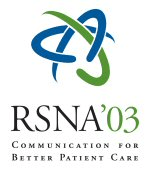Abstract:
HTML
Purpose: Dual phase Tc-99m sestamibi with SPECT/CT imaging allows anatomic and functional localization of hyperfunctioning parathyroid glands. We studied the ability of SPECT/CT imaging to add diagnostic information to traditional planar and SPECT imaging.
Methods and Materials: Eleven patients were analyzed (8 females, 3 males; age range: 36 to 83 years old). Nine patients had primary hyperparathyroidism and two patients had secondary hyperparathyroidism. Six patients had previous bilateral neck exploration. One patient had history of total thyroidectomy for thyroid cancer and another had radiation therapy as an infant. Planar imaging of the neck and mediastinum were acquired at 10 and 120 minutes post injection of 740 MBq Tc-99m sestamibi. SPECT/CT imaging was performed at 45 minutes post injection (VG/Hawkeye, GE Medical Systems). SPECT images were reconstructed (OSEM) with and without attenuation correction (AC). Two expert readers independently analyzed planar images + non-AC SPECT and then planar images + AC SPECT/CT.
Results: In 9 patients, for both readers, there was no additive diagnostic information of planar images + AC SPECT/CT over planar images + SPECT. In 1 patient, two readers agreed that AC SPECT/CT imaging provide additive information over planar + SPECT imaging. In this particular case, AC SPECT/CT helped to localize a parathyroid adenoma in the right tracheoesophageal groove. In another case, one reader identified a possible right mediastinal ectopic parathyroid adenoma using AC SPECT/CT while the other reader felt that the abnormal uptake corresponded to physiologic uptake in the right atrium. The most likely explanation for the inter-reader discordance in this case is the limited spatial resolution provided by the CT system (minimum slice width of 10 mm).
Conclusion: Dual phase Tc-99m sestamibi scintigraphy with AC SPECT/CT appears to have promising additional capabilities over traditional planar and SPECT imaging for preoperative identification and localization of hyperfunctioning parathyroid glands, especially those in unusual locations. Further improvements in the CT acquisition would provide more details for better localization and tissue differentiation on the AC SPECT/CT images.
Questions about this event email: mxnguyen@hotmail.com
Nguyen MD, M,
Does SPECT/CT Imaging Provide Additional Benefits over Traditional Planar and SPECT Imaging of Hyperfunctioning Parathyroids?. Radiological Society of North America 2003 Scientific Assembly and Annual Meeting, November 30 - December 5, 2003 ,Chicago IL.
http://archive.rsna.org/2003/3108186.html

